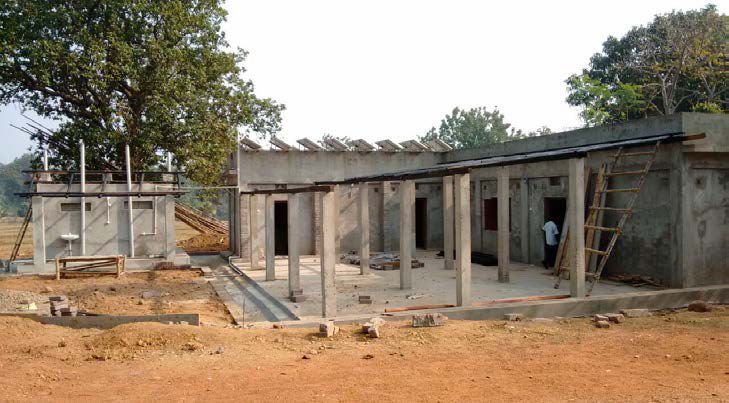Reality Check, Architecture from present to future

The 2018 KIT-Department of Architecture yearbook “Reality Check” charts the architectural and artistic expertise of both its students and its teaching staff. The bilingual book is divided into three sections. Discourse, photographic essay, and Documentary.
In Discourse, eleven authors elaborate on this yearbooks topic question, “How much practice do we need?” The preface of the book states “It is interesting to see how differently the theme is approached – reaching from personal experiences of students with practical projects during their studies, over the analysis and discussion of teaching concepts and courses by teaching staff, to more fundamental debates about the raised question.”
One project presented in Discourse, for example, led by two students from the engineers without Borders (EWB), concerned itself with improving the living situation in the Indian village of Hudisahi. Through sustainable methods of construction, the students worked to develop a self-sufficient community center equipped with solar panels, a canopy, sanitary facilities, and several biogas plants. It took 6 weeks of labor-intensive construction to edify the Community center. One of the students, Natasha Steiner, describes her experience actualizing such an ambitious project as the first time she really learned what it meant to construct a building. That not only did it signify the completion of a blueprint or model but that it changed the community around it as well; it was particularly gratifying for her to be able to see how her project enriched the Indian village and its community.
The photographic essay is a short, delightful picture series on the models of the renown German Architect Frei Otto, where his aesthetic and intricate design concepts are on full display.
The Documentary section houses a wide range of courses and selected research projects, demonstrating the diverse range of topics researched by the institutes and other units of the Department. The preface says “It mirrors the content of, amongst others, historical and human science, creative and artistic, as well as engineering and planning subjects, and combines a fund of specific disciplinary knowledge with a multitude of competences and skills.”
Another project, in the Documentary section, “Dreisam-Boulevard Freiburg” aims to integrate the neighborhood of Dreisam into the main axis of the city Freiburg. The students plan to uncover a perhaps forgotten river and transform it into an open waterway for the public. This would not only be a nice waterfront but it would also connect areas of the city previously isolated allowing for an efficiently adapted version of Freiburg.
The book documents the Department's activities during the time period from April 2017 to March 2018.
Eoin Schnell
